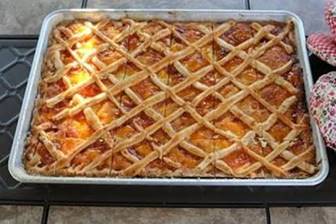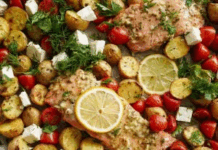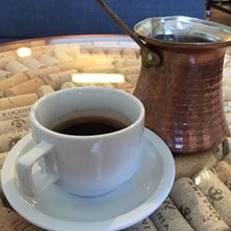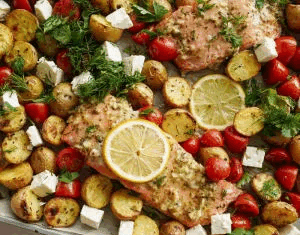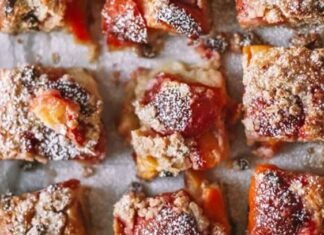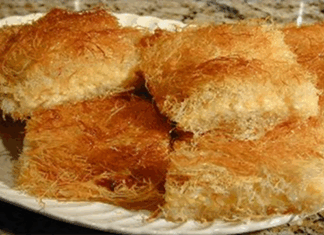FRESNO — Clarice Krikorian contributes this Russian-Armenian version of piróg that her beloved 91-year-old mother, Clara Yenovkian, has made for many years. “Piróg (perok) comes from the Armenian diaspora in Iran and bears similarities to the piróg pastry popular in many Eastern European countries. It’s a staple in most Russian households. Many bakeries boast their ability in producing the finest piróg usually made with apricot jam, cherry or fruit preserves. However, nothing compares to the one you bake right in your own home,” says Clarice.
“Piróg is often a buttery jam-filled snack cake, tart or slab pie that seems to have traveled all the way to Iran and Armenia where it reigns supreme to this day,” says Clarice. “It is made from yeast dough, short crust, or puff pastry that is filled with either sweet or savory ingredients. Popular fillings include meat, fish, mushrooms, cheese, cabbage, potatoes, fried onions, and fruits including plums, apples, apricots, peaches, or berries.”
“This is one of our family’s favorite desserts. My mother often made this during the summer apricot season, and would use her homemade apricot jam made from the fresh apricots that grew on our backyard apricot tree. Other fruit preserves and jellies work with this recipe, too, depending on whatever you have on hand. This is a special dessert — the recipe was given to my mother by some of her Russian-Armenian friends. On occasion, she would substitute plum jam in place of her apricot jam or preserves, and both versions are absolutely delicious and easy to make.

This is an ideal dessert for entertaining guests or bringing to a potluck luncheon or dinner. We serve this dessert with hot coffee or tea, and it is exceptionally good alongside Armenian coffee.”
“Piróg is made in different shapes: often oblong with tapering ends (like my mother would make it), circular or rectangular. The pastry can be open faced with no crust on top, or completely covered with a crust as well as a lattice shaped top crust. Most commonly made from a yeast dough, the addition of yeast distinguishes piróg from pies and other similar pastries,” adds Clarice.
“I remember standing alongside my mother at our old Formica kitchen table as she would roll out the dough then cut it into strips to form the beautiful lattice design for the top of the pastry. The yeast dough would fill up the house with such a delectable, comforting aroma. My sister and I would wait, impatiently, for this delicious treat to be baked and ready to devour. Needless to say, leftovers never lasted long in our house.”



